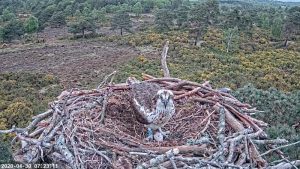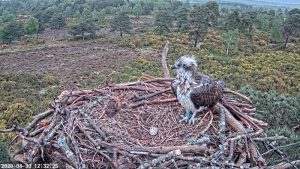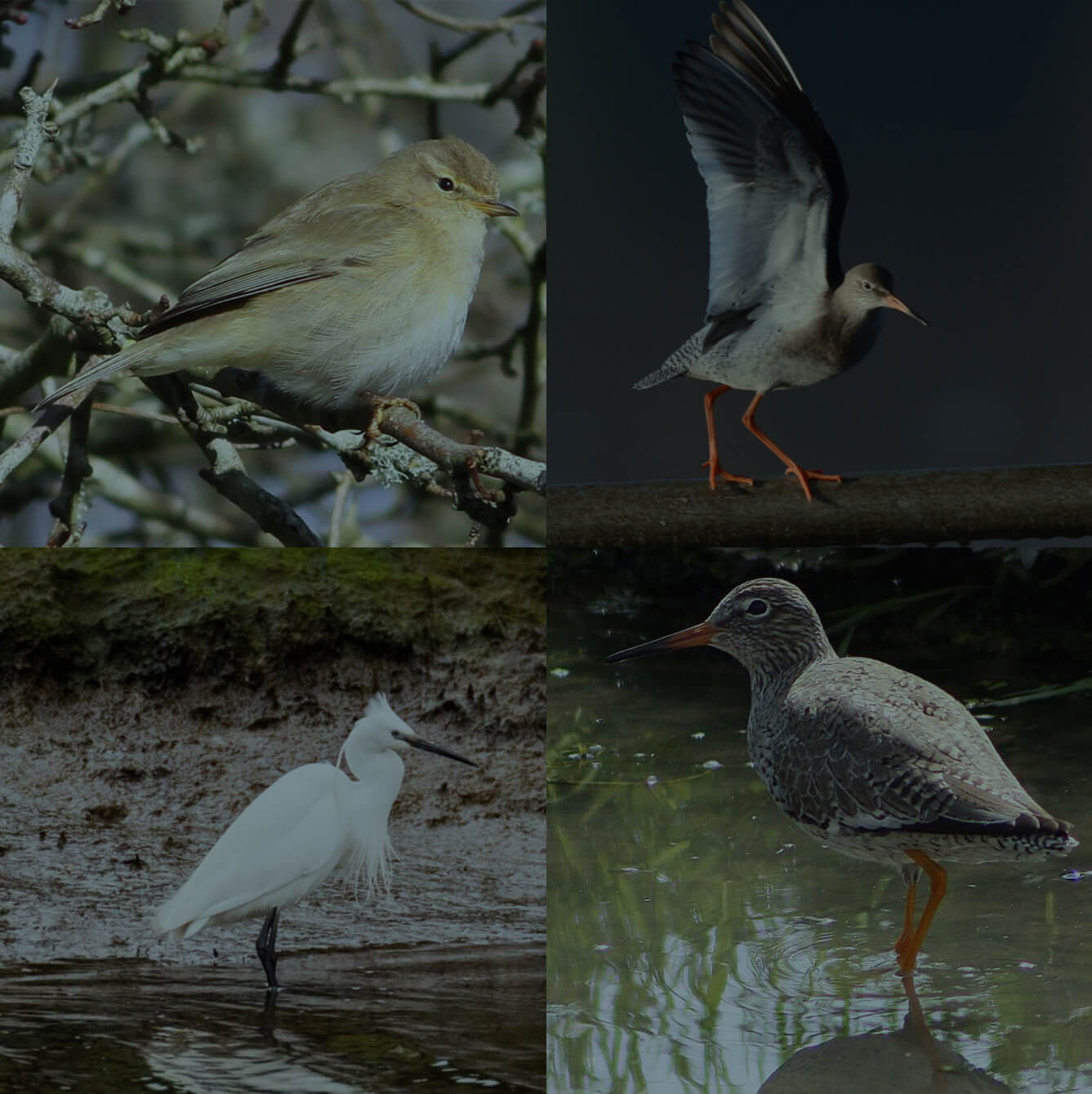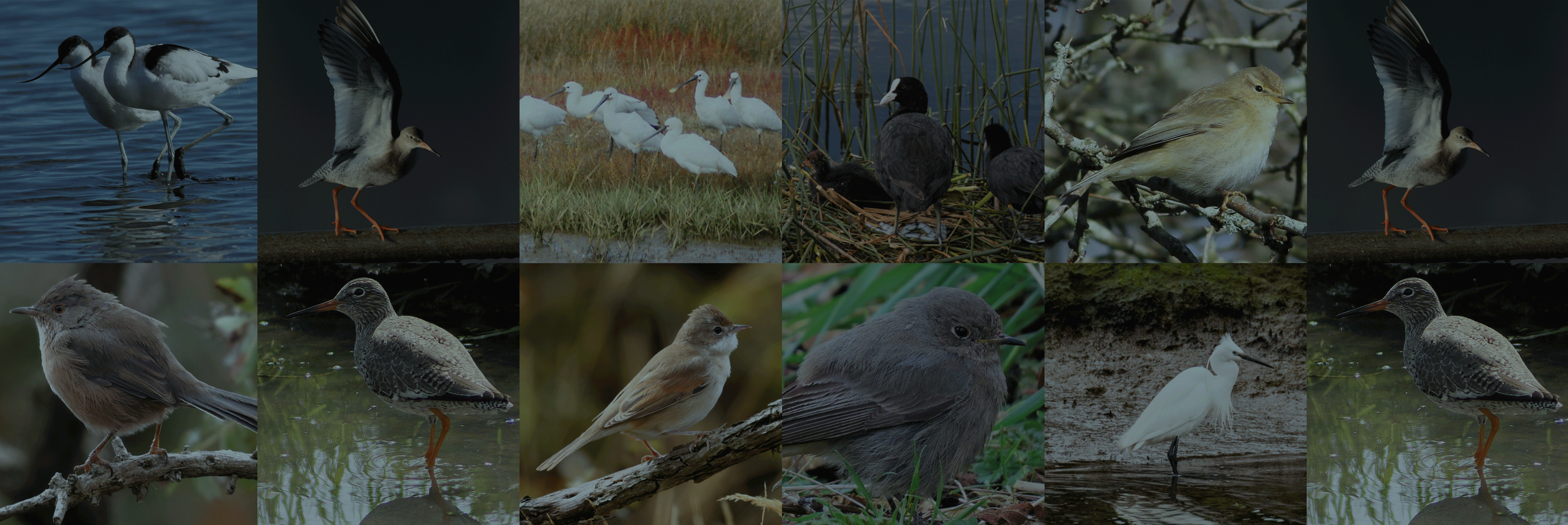Osprey Update: CJ7 Lays an Unfertilised Egg
Well, another day on the nest and CJ7 has managed to surprise us again... In the early hours of this morning at 03:35, CJ7 revealed an egg on the nest, after arriving on the nest shortly after 3am.
Over the past few weeks, CJ7 has shown how ready she is to breed, including the building up of the nest by bringing in new material, and even scraping out the egg cup. The egg that she laid this morning is an extension of this behaviour, and is the product of a boost in hormones for CJ7, showing her bond to this nest and her willingness to breed. Though it seems sad to see the egg alone in the nest, with CJ7 seemingly not knowing what to do, the Osprey Team are positive about this step…

CJ7 laying on this nest is a really good sign that she is happy with both this nest and the area, as well as being in excellent condition herself. This is great news as we know that she’s comfortable and is just waiting for a male, which makes us more confident that when she eventually does breed in the harbour, this is likely to be her chosen site. A good choice of nest to put the livestream camera on!
This is also one of the first times this has been properly documented. While it’s definitely a new area of understanding, this could be a common occurrence in Ospreys, as most nests that are monitored will have a breeding pair, reducing the likelihood of seeing this behaviour. Similar unfertilised egg laying has been believed to potentially have happened at both Glaslyn and Rutland, among other sites, but as we have no other resident males in the area, we can be more sure that this is the case. To have this seen on a camera is really special as it’s helping us understand more about Osprey breeding and behaviour. Laying unfertilised eggs is also good practise for CJ7 for when she makes a nesting attempt with a male, she will have more experience.
Could the egg be fertilised? Two weeks ago we saw CJ7 interact with Ospreys in the harbour on two occasions (16th and 19th April). The first visitor landed on another nest platform in the harbour with CJ7 twice, but only briefly. They were not pictured copulating in any of the pictures we received, and in the first image she can be seen reacting defensively towards him. This doesn’t mean to say that they didn’t copulate while not on the nest or when pictures weren’t taken, but the encounter was very brief and now 2 weeks ago. We would expect for a male to stay around longer if they did copulate. Usually, Ospreys will attempt to copulate several times with only a small proportion being successful, and fertilisation takes place during later attempts. It’s unlikely that the egg that CJ7 laid was fertilised by this male. As we didn’t see the other visitor land with CJ7, we cannot even be sure whether it was a male.
Will CJ7 incubate the egg? CJ7 has not been incubating the egg, and has been leaving it unattended for long periods of time. She isn’t treating the egg as if it were fertilised, and wouldn’t be able to either as it takes both parents to be able to raise a brood. During typically nesting, female Ospreys will do the majority of incubating (around 3/4s) and the males will do the fishing to provide for both the female and chicks. CJ7 is not able to both incubate and feed herself.

Will CJ7 lay any more eggs? It’s definitely possible for CJ7 to lay more unfertilised eggs over the next week. Osprey eggs are usually laid 2-3 days apart, so we’ll have to wait and see.
If LS7 arrives what will happen to the egg? CJ7 laying does not mean that LS7 will not arrive this year. As we’ve mentioned before, he’s a 3-year-old and so could arrive well into May or even later in the season. If the egg is still in the nest if LS7 arrives, either he or CJ7 will push it out of the nest. It’s likely that the egg will be predated, buried or pushed out before then, however.
We hope you’ll be able to join us for another Q & A on Friday morning on the YouTube livestream chat at 10-11am, where we will be happy to answer more of your questions. Please remember that it’s normal for Ospreys to have to wait to breed, as well as it being normal for 3-year-old Ospreys to return later in the season, so there’s no need to worry about either CJ7 or LS7! It’s very exciting to be able to watch the first steps of recolonisation in an area where Ospreys previously bred, as well as getting to learn more about this wonderful species. We’ll continue to bring you more information as we watch the events on the nest unfold…
You might also like...
Harbour Update – posted 22/11/24
Bitterly cold again today with more evidence of movement/arrivals with 4 Goldeneye in the harbour (2 south shore…
Find out moreHarbour Update – posted 21/11/24
With heavy rain forecast for today, it was a bit of a surprise when we ended up with…
Find out moreCall 01202 641 003
© 2024 Birds of Poole Harbour Registered Charity No. 1152615


